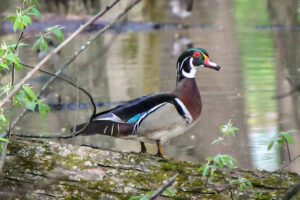Does Your Bird Photograph Stand Out?
We move on now to Artistic Quality, the third Image Characteristic of the QSAR (Bird Picture Quality Self-Assessment Rubric). There are three Components within Artistic Quality: 11. Originality, 12. The Story Within the Photograph, and 13. Impact. In this post we define and illustrate Originality.
11. Originality
I see lots of bird pictures – in magazines, on GreatBirdPics.com, on eBird and other websites. The ones that catch my eye aren’t just tack sharp and fill the frame appropriately. They display the bird in a unique way or a from a view I hadn’t seen before. Again, this is rather subjective; the more bird photographs you see the less likely one is going to look unique or original. Yet it happens all the time, particularly when looking at award winning photographs. When you read how the photographer got those shots – lying down on their stomach for hours on end, going out in a camouflaged canoe every day, tracking down a rare visitor to the region – you appreciate the originality of the shot.
The summer issue of the Audubon magazine arrived recently and it featured the 2021 Audubon Photography Awards. I was eager to see the photographs that won this prestigious photography contest. I expected photographs of exotic birds from far away lands and was surprised to see that the top awards were of species found right here in the midwest: Red-tailed Hawk, Sandhill Crane, Northern Cardinal, Northern Harrier, Purple Sandpiper, Peregrine Falcon, and Red-winged Blackbird. Typical birds seen in many places but the shots were Original – a baby Sandhill Crane perched atop its parent’s head, the wingtip of a Cardinal as it glances off the snow-covered ground, a Red-winged Blackbird as it drives its beak into a flower on a lily pad. You can see all the winners of the 2021 Audubon Photography Awards by Clicking Here.
So you can capture Award Worthy photographs of common species – you have to be either very lucky (I do believe in the motto, “The harder I Work, the Luckier I get”) or very tenacious. While looking at the Audubon winners be sure to read the Behind the Shot story for each shot. You will see some of the photographers went to great lengths to get the shot while others happened to be in the right place at the right time. No matter how they got it, they ended up with a photograph that showed a lot of originality. Below is the Originality Component of the QSAR:
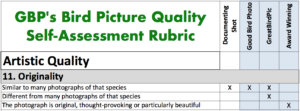
The three Levels of Quality shown demonstrate how the more original a photograph is, the higher the quality; each are explained below with example photographs from the Four Types of Bird Photograph.
Level of Quality 1: Similar to many photographs of that bird = Documenting Shot, Good Bird Photo, or GreatBirdPic
I did an analysis of my bird pictures in my Lightroom Catalog and found that about 30% of them were Documenting Shot quality and 31.5% were Good Bird Photos. I rated them as such for a variety of reasons: poor focus, bad lighting, or parts of the body obscured. Even if they displayed some Originality the technical defects could not be overcome.
About 37.5% of my photographs are GreatBirdPic quality (I tend to save the better images). These photographs have good Focus, Lighting, and Composition – that’s what defines them as GreatBirdPics. Many of them, however, lack Originality. That doesn’t detract from them as they can be beautiful to look at, it’s just they were just HO HUM pictures – technically good pictures I’ve seen hundreds of time before. No originality, just a shot of a bird. Granted, birds don’t often cooperate and pose for us in unique ways. We take their picture anyway, and there’s nothing wrong with that.
To illustrate this point we’ll use some photographs of Wood Ducks, a favorite of mine. These first two are rated Documenting Shot – they are a little far away, poorly lit, not very interesting and show no Originality.
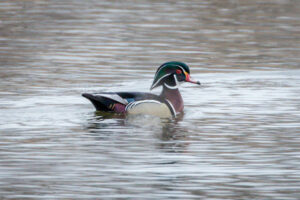
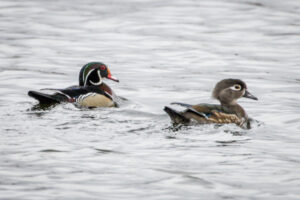
Let’s follow those up with some better pictures technically (Good Bird Photo) but are of the “Ho. Hum.” variety. They look fine but there is nothing there other than the bird to catch the eye of the viewer. There is no Originality in them either.
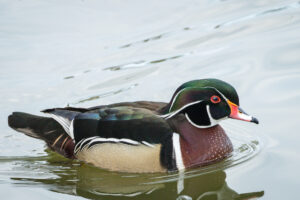
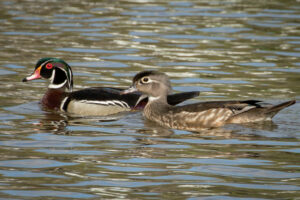
Finally, let’s look at some GreatBirdPics that are technically very good but are like a lot of Wood Duck Pictures. They don’t stand out from the crowd.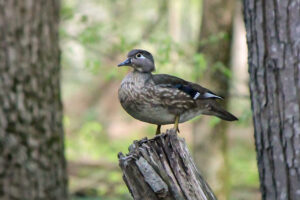
Level of Quality 2: Different from many photographs of that species = GreatBirdPic
Note that GreatBirdPic quality pics are listed in both Level 1 and Level 2 Level of Qualities. These photographs have good Focus, Lighting, and Composition – that’s what defines them as GreatBirdPics. Some are the “Ho. Hum.” variety of GreatBirdPic and others show some Originality. In fact, a Good Bird Photo can be elevated to GreatBirdPic quality if it shows some Originality.
The Originality of a bird photograph can come in subtle ways. Take a look at these next three photographs of the same Wood Duck. The first picture is good but kind of “Ho. Hum.” The second is a bit more interesting as it shows its drooping crest behind the head. The third one is the most interesting/original. You can still see the crest but you can also see that it is vocalizing. Perhaps not unique among the millions of Wood Duck photographs taken, but certainly different from many – the best GreatBirdPic of the three.
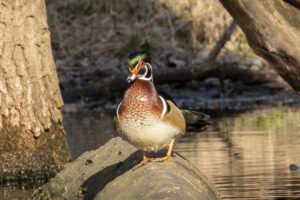
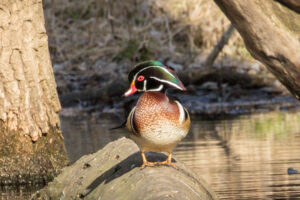
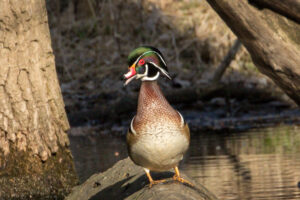
Let’s take another view of one of the previous pictures. It was shown as a Good Bird Pic above because it was rather “Ho. Hum.” However if we crop it differently it becomes different from many pictures of Wood Ducks and now can be considered a GreatBirdPic. Can you see the difference?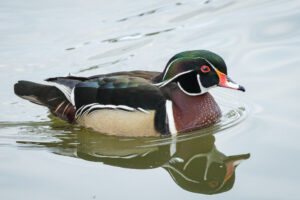
Level of Quality 3: The photograph is original, thought-provoking or particularly beautiful = Award Worthy
Less than 1.5% of my bird photographs are Award Worthy quality. They each have good technical qualities, but they have more – they have some Artistic Quality, usually in the form of Originality. Take a look at our final two Wood Duck photographs and ask yourself, “Have I ever seen a Wood Duck picture like that?” If not, they pass the originality test.
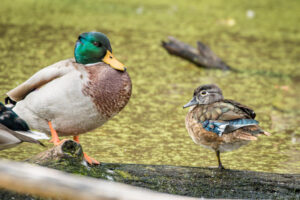
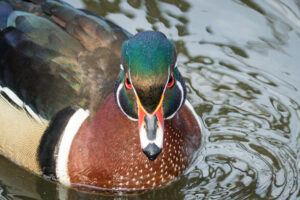
This third Level of Quality also includes “thought provoking” and “particularly beautiful” as criteria for Award Worthy. Each are tied to Originality; a photograph meeting either of these two criteria are by definition Original. Take a look at these last two Wood Duck photographs. The first, by Will139, is “thought provoking” in that you wonder why is it yelling at me? why is it running?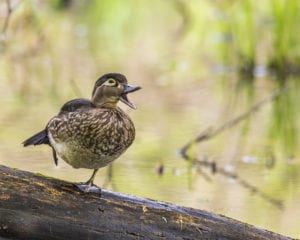
Our last example is “particularly beautiful” with the male and female wood ducks perched on the rotting wood with the green lichen under their feet.
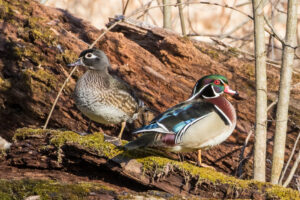
If you want your bird photographs to stand out from the crowd they have to be Original, thought provoking or particularly beautiful. You can have good bird photographs that lack these qualities, but if you’re going to enter a photography contest make sure your entries contain a spark of Originality..
Next, we look at the second Component of Artistic Quality, 12. The Story Within the Photograph.
Stay Safe. Go Birding. Take Pics. Post Here. Repeat
Mike
If you would like to learn more about GreatBirdPics.com Click Here. Members can post their own Great Bird Pics, communicate with other members, and will receive regular emails about bird photography.
